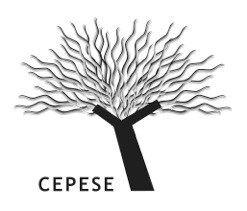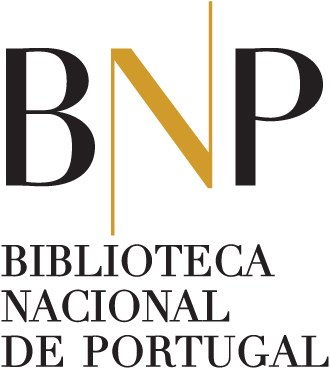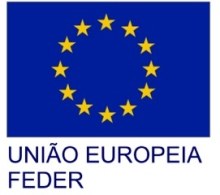Medieval Portuguese Libraries
In the scope of the research project funded by European Science Foundation, EuroCORECODE/001/2009 - Cuius Regio. An analysis of the cohesive and disruptive forces destining the attachment of (groups of) persons to and the cohesion within regions as a historical phenomenon, it was considered important to organize material and documentary sources through which it would be possible to disclose certain elements of national identity. Indeed, in the set of the work carried out under this project it became evident the importance of the identity factor, depending on which the importance of differentiating social consciousness as a determinant of this identity coordinated was recognized.
With the full support of the coordinator of this EUROCORE program (Professor Dick de Boer) and with the prior agreement of the Foundation for Science and Technology, it was decided to organize a database on Portuguese Medieval Libraries, starting with the selection of those that have higher expression: Santa Cruz de Coimbra and Alcobaça.
These two libraries, through two sets of the greatest interest, have a significant role, through which it is seen the articulation of the European dimension with the national component.
It was our purpose to do this work standardizing the references in a single database, which, in open access, is available from CEPESE (Research Centre for the Study of Population, Economics and Society, Porto University), host institution of this project. In addition, a full program of digitization of these two Libraries began. For financial and operational reasons, the digitization started by the Library of Alcobaça, being available at this time already a significant part. It is expected to be able to finish the availability of this collection in the short-term, leaving to another opportunity the Library of Santa Cruz of Coimbra.
To achieve this purpose, it was organized a working group that was responsible for filling out the descriptive elements available on each of the libraries to the database. So:
1) Regarding the Livraria de Mão of Santa Cruz de Coimbra, a recent catalog of the 97 charters was published (Catálogo dos Códices da Livraria de Mão do Mosteiro de Santa Cruz de Coimbra na Biblioteca Pública Municipal do Porto, ed. Aires Augusto Nascimento, José Francisco Meirinhos, Porto, BPMP, 1997) and is already available in open access (http://repositorio-aberto.up.pt/handle/10216/55834?mode=full).
2) Regarding the Library of Alcobaça, during the XX century, two catalogues were published (Arnaldo Faria de Ataíde e Melo - Inventário dos códices alcobacenses, Lisbon: Biblioteca Nacional de Lisboa, 6 vols, 1930-1978 and Thomas L. Amos - The Fundo Alcobaça of the Biblioteca Nacional, Lisbon: Collegeville, Minnesota: Hill Monastic Manuscript Library, 3 vols, 1988-1990). In this case, the type of criteria that sustains these two publications led us to choose reworking new descriptive records of each charter, a task that was prepared by the National Library (Lisbon) under an protocol signed between CEPESE and that institution in May 2013.
For this reason, the information available on these charters is different. Although we have tried to standardize the descriptive records, there are always discrepancies that cannot be avoided, given the different treatment that, so far, the two libraries have been object of.
Remarks on criteria followed and consultation of the Database
A) Applicable to both Libraries
- DATING
When the date of the charter corresponds to a long period (e.g. one century), the begging date must be placed (e.g. 1401-01-01) as well as the ending data (e.g.1500-12-31). Moreover, the available search fields allow the identification of documents by theme (using the field “TEXTO”, where author’s names, places, book titles, etc, may be included). Regarding the field “DESCRIÇÃO ARQUIVÍSTICA”, the researcher may find a charter by using the indication of the Library and the corresponding shelf mark (e.g. ALC. 415 or Santa Cruz 93).
- DECORATION
In the database of Santa Cruz, the distinction between primary and secondary decoration is made. Regarding primary decoration, different situations are distinguished (e.g. illuminations; borders; ornamented initials; historiated initials …) and, regarding secondary decoration, the data only indicates its existence without specifying the situations (rubrics, colored initials…). In the registers from the Library of Alcobaça, there is only the indication of the ornamentation, both primary (illuminations) and secondary (rubrics).
B) Applicable to the Library of Alcobaça
- Choices made by the National Library of Portugal were fully maintained in regard to the use of square brackets, both in titles and authors when identification is not made in the charter, but there is an element or note attached that indicates this situation.
For easier consultation, a list of acronyms and abbreviations used in the records was created. Please click here for more information. Further details on these documental charters, Please click here for more information .See more
NOTE: A database with the size and the complexity of the present one, naturally requires a complementary effort to review the information available. In addition, the finalization of the manuscripts digitization still has to continue.
Accordingly, only when this effort is complete, it will be possible to display the data in open access. This database aims at providing a useful working tool, so it always will have constant updates.
Luís Adão da Fonseca
Maria Cristina Pimenta
Paula Pinto Costa
Joana Lencart
António Pestana de Vasconcelos
To consult the database click here






